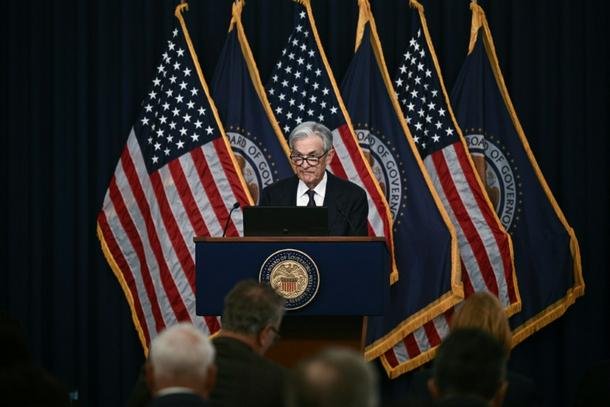
US Federal Reserve Board Chair Jerome Powell told reporters that the policymakers were not affected by criticism from President Donald Trump
Washington (AFP) - The US Federal Reserve on Wednesday announced another pause in rate cuts and warned of higher risks to its inflation and unemployment goals in a likely reference to President Donald Trump’s tariff rollout.
Policymakers voted unanimously to hold the US central bank’s key lending rate at between 4.25 percent and 4.50 percent, the Fed said in a statement.
Speaking to reporters in Washington after the decision was published, Fed Chair Jerome Powell said there was “a great deal of uncertainty” about where the Trump administration’s tariff policies will end up.
The US president introduced steep levies last month on China and lower “baseline” levies of 10 percent on goods from most other countries, sparking weeks of turbulence in the financial markets.
The White House also slapped higher tariffs on dozens of other trading partners and then abruptly paused them until July to give the United States time to renegotiate existing trade arrangements.
Many analysts have warned that the administration’s actions will likely push up inflation and unemployment while slowing growth – at least in the short run.
That could complicate the path towards rate cuts for the Fed, which has a dual mandate to act independently of political pressure to keep inflation at two percent over the longer term, and the unemployment rate as low as possible.
- ‘A really difficult choice’ -

Infographic charting the changes in the benchmark interest rate of the United States Federal Reserve since 2000
The Fed said Wednesday that “swings in net exports” did not appear to have affected the solid economic activity – a nod to the pre-tariff surge in imports in the first quarter ahead of the introduction of Trump’s “liberation day” tariffs.
Wall Street stocks closed higher following the Fed’s decision.
The “hard” economic data published in recent weeks points towards an economic slowdown, while the unemployment rate has hovered close to historic lows, and the inflation rate has trended towards the Fed’s two percent target.
However, the “softer” economic survey data have pointed to a sharp drop-off in consumer confidence and growing expectations of higher inflation over the longer term – in contrast to the market’s inflation expectations, which remain relatively well-anchored.
“All the hard data are backward looking,” former Fed economist Rodney Ramcharan told AFP on Wednesday. “And all the soft data that they’re getting…those data look pretty bad.”
“The Fed doesn’t have a lot of good options in front of them,” added Ramcharan, now a professor of finance at the University of Southern California’s Marshall School of Business. “It’s a really difficult choice.”
- Rate cuts delayed -

Graphic showing the growth of annual US GDP by quarter since 2015
Powell was also asked about the recent public criticism leveled at him and the Fed by senior government officials – including the president, who has called for him to cut rates to boost economic growth.
An upbeat Powell said Trump’s criticism didn’t affect the Fed’s job of tackling inflation and unemployment “at all.”
“We are always going to consider only the economic data, the outlook, the balance of risks, and that’s it,” he added.
Following the April tariff rollout, many analysts pared back or delayed their expectation of rate cuts for this year, predicting that tariffs will push up prices and slow growth – at least in the short run.
“The best course of action for the FOMC may simply be to wait for more clarity about trade policy and its implications for the U.S. economy,” Wells Fargo chief economist Jay Bryson wrote in an investor note after the decision was published by the Fed’s rate-setting Federal Open Market Committee.
“While the Fed is, and should be, focused on the fragility of inflation expectations, we expect that by late summer labor market weakness will prompt a policy response,” JPMorgan chief economist Michael Feroli wrote in a note to clients, penciling in a first rate cut for September.